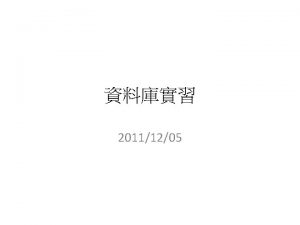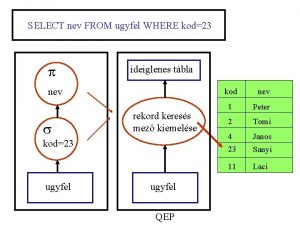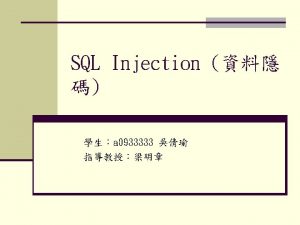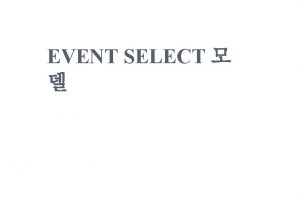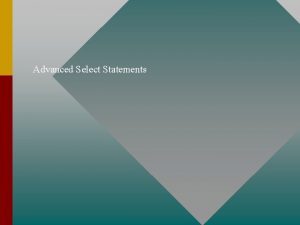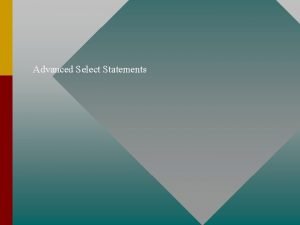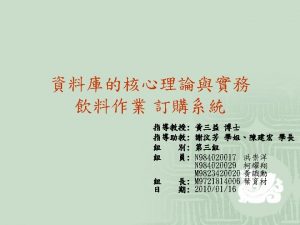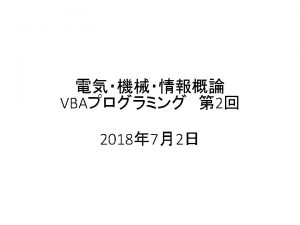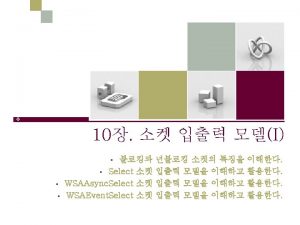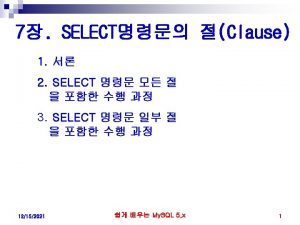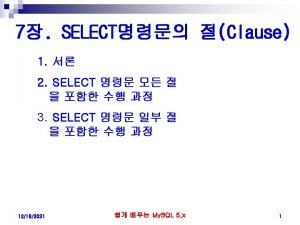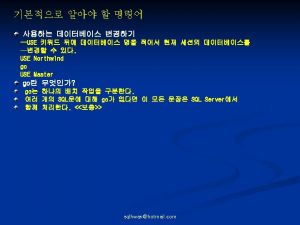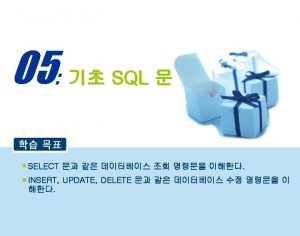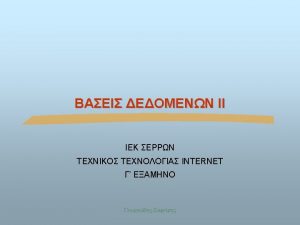How to Select the Masks DO choose masks







![Types of Masks • Surgical Masks: • Three layers: [4] Melt-Blown Non-Woven layer: Able Types of Masks • Surgical Masks: • Three layers: [4] Melt-Blown Non-Woven layer: Able](https://slidetodoc.com/presentation_image_h2/1a1d52c5969490246d29bfcc835251b2/image-8.jpg)











![Types of Masks • Surgical Masks: • Three layers: [4] Melt-Blown Non-Woven layer: Able Types of Masks • Surgical Masks: • Three layers: [4] Melt-Blown Non-Woven layer: Able](https://slidetodoc.com/presentation_image_h2/1a1d52c5969490246d29bfcc835251b2/image-20.jpg)
![SEM of Surgical and Normal Masks ~ 140 um [13] Surgical Mask, with a SEM of Surgical and Normal Masks ~ 140 um [13] Surgical Mask, with a](https://slidetodoc.com/presentation_image_h2/1a1d52c5969490246d29bfcc835251b2/image-21.jpg)
![Size of Corona Virus • According to the research presented in [4], typical corona Size of Corona Virus • According to the research presented in [4], typical corona](https://slidetodoc.com/presentation_image_h2/1a1d52c5969490246d29bfcc835251b2/image-22.jpg)





![Effect of Electrostatic Attraction on Filtering Efficiency: Fabrication of Melt-Blown Non-Woven. [11] 28 Effect of Electrostatic Attraction on Filtering Efficiency: Fabrication of Melt-Blown Non-Woven. [11] 28](https://slidetodoc.com/presentation_image_h2/1a1d52c5969490246d29bfcc835251b2/image-28.jpg)





![Back-Up: Theoretical curve of filtering efficiency E: Filtration efficiency [15] 34 Back-Up: Theoretical curve of filtering efficiency E: Filtration efficiency [15] 34](https://slidetodoc.com/presentation_image_h2/1a1d52c5969490246d29bfcc835251b2/image-34.jpg)

![Back-Up: Theoretical curve of filtering efficiency • Mask used and parameters. [15] 36 Back-Up: Theoretical curve of filtering efficiency • Mask used and parameters. [15] 36](https://slidetodoc.com/presentation_image_h2/1a1d52c5969490246d29bfcc835251b2/image-36.jpg)


![References • [1] 口罩與過濾。科學發展月刊,2003年八月,368期。 • [2] INSTITUTE OF MEDICINE OF THE NATIONAL ACADEMIES, “REUSABILITY References • [1] 口罩與過濾。科學發展月刊,2003年八月,368期。 • [2] INSTITUTE OF MEDICINE OF THE NATIONAL ACADEMIES, “REUSABILITY](https://slidetodoc.com/presentation_image_h2/1a1d52c5969490246d29bfcc835251b2/image-39.jpg)
![Reference (Cont’d) • [8] 3 M靜電駐極技術 作原理-靜電載入的濾材效果: https: //www. youtube. com/watch? v=ivd. XSSxg. Xgg&feature=emb_title Reference (Cont’d) • [8] 3 M靜電駐極技術 作原理-靜電載入的濾材效果: https: //www. youtube. com/watch? v=ivd. XSSxg. Xgg&feature=emb_title](https://slidetodoc.com/presentation_image_h2/1a1d52c5969490246d29bfcc835251b2/image-40.jpg)
![Reference (Cont’d) • [15] Longfei Chen, Shirun Ding, Zhirong Liang, Lei Zhou, Hongxing Zhang Reference (Cont’d) • [15] Longfei Chen, Shirun Ding, Zhirong Liang, Lei Zhou, Hongxing Zhang](https://slidetodoc.com/presentation_image_h2/1a1d52c5969490246d29bfcc835251b2/image-41.jpg)
- Slides: 41

How to Select the Masks DO choose masks that DO NOT choose masks that 1

Special considerations Gaiter & face shields Children 2

Special considerations Cold weather gear What you need to know • A mask is NOT a substitute for social distancing. Masks should still be worn in addition to staying at least 6 feet (2 m) apart, especially when indoors around people who don’t live in your household. • Masks should completely cover the nose and mouth and fit snugly against the sides of face without gaps. • Keep a spare mask to replace one that becomes wet from moisture in your 3 breath, snow, or rain.

How to Wear a Mask Correctly DO wear a mask that How NOT to wear a mask 4

How to Wear a Mask Correctly How to take off a mask 5

Store Your Mask • Store wet or dirty masks in a plastic bag Disposable Masks 6

7
![Types of Masks Surgical Masks Three layers 4 MeltBlown NonWoven layer Able Types of Masks • Surgical Masks: • Three layers: [4] Melt-Blown Non-Woven layer: Able](https://slidetodoc.com/presentation_image_h2/1a1d52c5969490246d29bfcc835251b2/image-8.jpg)
Types of Masks • Surgical Masks: • Three layers: [4] Melt-Blown Non-Woven layer: Able to filter aerosols containing pathogens (bacteria and viruses) Average pore size ~ 5 microns. 8

Effect of Electrostatic Attraction on Filtering Efficiency 大學部半導體實驗室使用 The lower three types of masks, which do not contain effective melt-blown non-woven layer, has relatively low filtering efficiency, and their performance at 0. 1 um ~ a few um, which is the size of most pathogens, is extremely poor. [14] 9



Before we start, there are some general points to be aware of. (3/3) • 口罩過濾能力標示分類: • N - Not oil resistant • R - Resistant to oil • P - Oil Proof • Respirator Rating Number Class • 95 - Removes 95% of all particles that are at least 0. 3 microns in diameter • 99 - Removes 99% of particles that are at least 0. 3 microns in diameter • 100 - Removes 99. 97% of all particles that are 0. 3 microns in diameter or larger. HE or HEPA quality filter. 12

13

Semiconductor Lab Final Report: Mask (口罩) 電機三 鄭凱鴻 B 06901138 14



Before we start, there are some general points to be aware of. (3/3) • 口罩過濾能力標示分類: • N - Not oil resistant • R - Resistant to oil • P - Oil Proof • Respirator Rating Number Class • 95 - Removes 95% of all particles that are at least 0. 3 microns in diameter • 99 - Removes 99% of particles that are at least 0. 3 microns in diameter • 100 - Removes 99. 97% of all particles that are 0. 3 microns in diameter or larger. HE or HEPA quality filter. 17

Outline • Types of Masks • Filter mechanisms • Filtering efficiency analysis • Effects of electrostatic attraction on filter efficiency • Air flow resistance of different masks • Remarks on the usage of masks • Back-up: theoretical curve of filtering efficiency • References 18

Types of Masks • Normal Masks: • Most common ones, without special processing. • Cannot stop airborne pathogens. • Filter dusts, keep face warm. • Active Carbon Masks: • In addition to dusts, active carbon layer can absorb organic particles, odor particles, and chlorine. • Absorb by forming chemical bonds with the pollutants. • Cannot stop airborne pathogens. 19
![Types of Masks Surgical Masks Three layers 4 MeltBlown NonWoven layer Able Types of Masks • Surgical Masks: • Three layers: [4] Melt-Blown Non-Woven layer: Able](https://slidetodoc.com/presentation_image_h2/1a1d52c5969490246d29bfcc835251b2/image-20.jpg)
Types of Masks • Surgical Masks: • Three layers: [4] Melt-Blown Non-Woven layer: Able to filter aerosols containing pathogens (bacteria and viruses) Average pore size ~ 5 microns. 20
![SEM of Surgical and Normal Masks 140 um 13 Surgical Mask with a SEM of Surgical and Normal Masks ~ 140 um [13] Surgical Mask, with a](https://slidetodoc.com/presentation_image_h2/1a1d52c5969490246d29bfcc835251b2/image-21.jpg)
SEM of Surgical and Normal Masks ~ 140 um [13] Surgical Mask, with a layer of melt-blown non-woven of ~140 microns [13] Normal Mask, the middle layer is not capable of filtering 21 pathogens
![Size of Corona Virus According to the research presented in 4 typical corona Size of Corona Virus • According to the research presented in [4], typical corona](https://slidetodoc.com/presentation_image_h2/1a1d52c5969490246d29bfcc835251b2/image-22.jpg)
Size of Corona Virus • According to the research presented in [4], typical corona virus, inclusive of the recent COVID-19, had size around 65 ~ 125 nm, yet the pore size of the Melt-Blown Non-Woven layer in surgical masks is around 5 microns (5000 nm). • How can the layer filter the minute viruses? • To know the answer to this question, we must first understand the mechanisms of filtering. 22

Filter mechanisms and Important points to consider • The filter efficiency of a surgical mask would, first of all, be determined by its fiber: how dense it is, how thick it is, and how big individual fibers are. Denser fiber can increase the filter efficiency, but it would also result in greater resistance in the airflow, increasing the difficulty of breathing, which should be avoided. • There are primarily four filter mechanisms: • • Inertial Impaction, Interception, Diffusion, and Electrostatic Attraction. Mechanical Mechanisms • Among these mechanisms, the electrostatic attraction is especially important to provide sufficient filtering while keeping enough air flow for the user to breathe. Also, the first three mechanisms are called “mechanical”. 23

Inertial Impaction and Interception • Inertial Impaction: • For those particles with larger inertia (heavier particles), since the particles are not able to follow the air stream when the stream diverts around a fiber, they would be collected by the filter. This method is more efficient in collection larger particles. • Interception: • Unlike inertial impaction, the particles can follow the airstream, but they would be stopped by the fiber since they are still big enough. This mechanism also contributes to collection of large particles. [6] Particle Filter Fiber Air Stream 24

Diffusion and Electrostatic Attraction • Diffusion: • Small particles would be collides by air molecules randomly (Brownian motion), so its track would be random. It is likely that it would deviate from the airstream and be intercepted by the filtering fiber. Since Brownian motion affects smaller particles more, this mechanism is responsible for collection small particles. • Electrostatic Attraction: • When the fiber is charged, it could attract charged particle. This mechanism is theoretically independent of particle size. However, since heavier particles would be less affected by external forces, this mechanism contributes more for the collection of small particles. [6] 25

Filtering Efficiency • Since there are various filtering mechanisms, and each is more effective for particles of different sizes, their collective effect is worth studying. This is the filter efficiency curve of an unspecified filter from [5]. In the following slides we would see that even though the curve might differ somewhat for different masks, all masks possess efficiency curves with similar trends. [6] 26

Filtering Efficiency At MPPS, no mechanical filtering mechanism is truly effective, so the role of electrostatic attraction comes into play. Note: This curve only considers mechanical filtering mechanisms. [6] Most Penetrating Particle Size (MPPS): The point at which the filter efficiency is tested. 27
![Effect of Electrostatic Attraction on Filtering Efficiency Fabrication of MeltBlown NonWoven 11 28 Effect of Electrostatic Attraction on Filtering Efficiency: Fabrication of Melt-Blown Non-Woven. [11] 28](https://slidetodoc.com/presentation_image_h2/1a1d52c5969490246d29bfcc835251b2/image-28.jpg)
Effect of Electrostatic Attraction on Filtering Efficiency: Fabrication of Melt-Blown Non-Woven. [11] 28

Effect of Electrostatic Attraction on Filtering Efficiency • In order to reduce the airflow resistance of the mask while keeping the filter efficiency good, electrostatic attraction is essential since it does not physically increase the filter density, which would not increase the flow resistance. On the other hand, it provides an extra filter mechanism, increasing the filtering efficiency. • Also, the main component of melt-blown non-woven, polypropylene(聚丙烯)is non-polar in nature, so it does not provide strong electrostatic attraction without extra treatment. • A common technique to charge the material is through corona discharge. Corona discharge occurs by applying high AC voltage at atmospheric pressure, and the gas molecules would be ionized to react with the polymer molecules, thereby charging them. • A link to a video of the operation of a commercially corona discharge machine is as follows: • https: //www. youtube. com/watch? v=Kbp. YNN 88 L 3 c 29

Effect of Electrostatic Attraction on Filtering Efficiency As we can observe from the data presented in [3], the filtering efficiency is increased significantly from ~37% to ~96 % after corona treatment. Also, the rightmost mask is treated with extra process, in which the melt-blown non-woven is exposed to high-pressure water vapor with ions. Furthermore, the pressure loss is small, only 3. 55 mm H 2 O, and for reference, the atmospheric pressure is ~ 10000 mm H 2 O. This means that the mask has small resistance to airflow. [4] 30

Effect of Electrostatic Attraction on Filtering Efficiency 大學部半導體實驗室使用 The lower three types of masks, which do not contain effective melt-blown non-woven layer, has relatively low filtering efficiency, and their performance at 0. 1 um ~ a few um, which is the size of most pathogens, is extremely poor. [14] 31

Airflow Resistance of Different Masks The better the efficiency, the higher the airflow resistance. [14] 32

Additional Remarks on the Usage of Masks • Store the mask at a cool place with low humidity since static electricity dissipates faster at high temperature and high humidity. (Typically, a surgical mask is good for 3 years, and an N 95 mask good for 5 years. But the actual time should be referred from the package of the mask. ) • Do not sanitize the masks with alcohol. Both alcohol and alcohol vapor would eliminate the static electricity on the melt-blown non-woven layer. • Exposure under oily and liquid aerosol would decrease the efficiency of masks more rapidly compared to exposure to solid aerosols. Thus, if the environment contains higher concentration of these types of aerosols, the masks should be changed more frequently. • The mask should be sealed properly around the face to provide the best filter efficiency. • Do not touch or press the mask to prevent the liquid aerosol containing viruses from soaking the mask and go through the filter. (Fingers away from the virus) 33
![BackUp Theoretical curve of filtering efficiency E Filtration efficiency 15 34 Back-Up: Theoretical curve of filtering efficiency E: Filtration efficiency [15] 34](https://slidetodoc.com/presentation_image_h2/1a1d52c5969490246d29bfcc835251b2/image-34.jpg)
Back-Up: Theoretical curve of filtering efficiency E: Filtration efficiency [15] 34

Back-Up: Theoretical curve of filtering efficiency (dimensionless parameter describing the Brownian diffusion deposition) (friction factor) (correction factor) [15] (describe the deposition efficiency of larger particles) 35 (correction factor)
![BackUp Theoretical curve of filtering efficiency Mask used and parameters 15 36 Back-Up: Theoretical curve of filtering efficiency • Mask used and parameters. [15] 36](https://slidetodoc.com/presentation_image_h2/1a1d52c5969490246d29bfcc835251b2/image-36.jpg)
Back-Up: Theoretical curve of filtering efficiency • Mask used and parameters. [15] 36

Back-up: Definitions for different classes of masks • Types: • N: Not resistant to oil • R: Somewhat resistant to oil • P: Strongly resistant to oil (oil proof) • Classes: • -95: filter out at least 95% of airborne particles during “worse case” testing using a “most-penetrating” sized particle. • -99: filter out at least 99% of airborne particles during “worse case” testing using a “most-penetrating” sized particle • -100: filter out at least 99. 7% of airborne particles during “worse case” testing using a “most-penetrating” sized particle [17][18] 37

![References 1 口罩與過濾科學發展月刊2003年八月368期 2 INSTITUTE OF MEDICINE OF THE NATIONAL ACADEMIES REUSABILITY References • [1] 口罩與過濾。科學發展月刊,2003年八月,368期。 • [2] INSTITUTE OF MEDICINE OF THE NATIONAL ACADEMIES, “REUSABILITY](https://slidetodoc.com/presentation_image_h2/1a1d52c5969490246d29bfcc835251b2/image-39.jpg)
References • [1] 口罩與過濾。科學發展月刊,2003年八月,368期。 • [2] INSTITUTE OF MEDICINE OF THE NATIONAL ACADEMIES, “REUSABILITY OF FACEMASKS DURING AN INFLUENZA PANDEMIC”, Chapter 2, THE NATIONAL ACADEMIES PRESS, Washington, D. C. (2006). • [3] https: //www. carbonblocktech. com/the-science-behind-activated-carbon-water-filters/ • [4] 全球紡織資訊網: http: //www. tnet. org. tw/Article/Detail/26550? utm_source=Tnet. FB&utm_medium=Social&utm_ca mpaign=FB_daily • [5] Muhammad Adnan Shereen et al. “COVID-19 infection: Origin, transmission, and characteristics of human coronaviruses”, Journal of Advanced Research, Volume 24, 2020, Pages 91 -98, ISSN 2090 -1232. • [6] Centers for Disease Control and Prevention: https: //blogs. cdc. gov/niosh-scienceblog/2009/10/14/n 95/ • [7] Business Today: https: //www. businesstoday. com. tw/article/category/80392/post/202004070022/ 39
![Reference Contd 8 3 M靜電駐極技術 作原理靜電載入的濾材效果 https www youtube comwatch vivd XSSxg Xggfeatureembtitle Reference (Cont’d) • [8] 3 M靜電駐極技術 作原理-靜電載入的濾材效果: https: //www. youtube. com/watch? v=ivd. XSSxg. Xgg&feature=emb_title](https://slidetodoc.com/presentation_image_h2/1a1d52c5969490246d29bfcc835251b2/image-40.jpg)
Reference (Cont’d) • [8] 3 M靜電駐極技術 作原理-靜電載入的濾材效果: https: //www. youtube. com/watch? v=ivd. XSSxg. Xgg&feature=emb_title • [9] Ker-Ching Hsieh,Ph. D, 台灣區不織布同業公會: http: //www. nonwoven. org. tw/index. php? Act=0&SK=11290&MK=0&PK=5345 • [10] Sellin, Noeli, & Campos, João Sinézio de C. (2003). Surface composition analysis of PP films treated by corona discharge. Materials Research, 6(2), 163 -166. https: //doi. org/10. 1590/S 151614392003000200009 • [11] 中興大學 纖維與紡織研究中心。102/12/17 -1 學院高性能紡織與纖維基礎技術研討會。 • [12] Tantec Roto. TEC-X | Corona Treatment System: https: //www. youtube. com/watch? v=Kbp. YNN 88 L 3 c • [13] 勀傑科技有限公司:http: //www. kctech. com. tw/zh/desktop-sem-mask-fiber • [14] 勞動部勞動及職業安全研究所:https: //www. ilosh. gov. tw/menu/1223/1235/1237/拋棄式口罩 之使用注意事項/ 40
![Reference Contd 15 Longfei Chen Shirun Ding Zhirong Liang Lei Zhou Hongxing Zhang Reference (Cont’d) • [15] Longfei Chen, Shirun Ding, Zhirong Liang, Lei Zhou, Hongxing Zhang](https://slidetodoc.com/presentation_image_h2/1a1d52c5969490246d29bfcc835251b2/image-41.jpg)
Reference (Cont’d) • [15] Longfei Chen, Shirun Ding, Zhirong Liang, Lei Zhou, Hongxing Zhang & Cuiqi Zhang (2017) Filtration efficiency analysis of fibrous filters: Experimental and theoretical study on the sampling of agglomerate particles emitted from a GDI engine, Aerosol Science and Technology, 51: 9, 1082 -1092, DOI: 10. 1080/02786826. 2017. 1331293 • [16] 校園H 1 N 1新型流感防疫專區: http: //www-o. ntust. edu. tw/h 1 n 1/page 16. htm • [17] NIOSH-Approved Particulate Filtering Facepiece Respirators: https: //www. cdc. gov/niosh/npptl/topics/respirators/disp_part/default. html • [18] Respirator Fact Sheet: https: //www. cdc. gov/niosh/npptl/topics/respirators/factsheets/respsars. html 41
 Select * from select
Select * from select Select * from select
Select * from select Select * from select
Select * from select Nameadmin
Nameadmin 1. choose the correct answer
1. choose the correct answer Choose the correct it
Choose the correct it Thiếu nhi thế giới liên hoan
Thiếu nhi thế giới liên hoan Chúa yêu trần thế
Chúa yêu trần thế điện thế nghỉ
điện thế nghỉ Một số thể thơ truyền thống
Một số thể thơ truyền thống Trời xanh đây là của chúng ta thể thơ
Trời xanh đây là của chúng ta thể thơ Bảng số nguyên tố lớn hơn 1000
Bảng số nguyên tố lớn hơn 1000 đặc điểm cơ thể của người tối cổ
đặc điểm cơ thể của người tối cổ Tỉ lệ cơ thể trẻ em
Tỉ lệ cơ thể trẻ em Fecboak
Fecboak Các châu lục và đại dương trên thế giới
Các châu lục và đại dương trên thế giới ưu thế lai là gì
ưu thế lai là gì Sơ đồ cơ thể người
Sơ đồ cơ thể người Tư thế ngồi viết
Tư thế ngồi viết Kể tên các môn thể thao
Kể tên các môn thể thao Bàn tay mà dây bẩn
Bàn tay mà dây bẩn Hát kết hợp bộ gõ cơ thể
Hát kết hợp bộ gõ cơ thể Mật thư anh em như thể tay chân
Mật thư anh em như thể tay chân Tư thế ngồi viết
Tư thế ngồi viết Ví dụ giọng cùng tên
Ví dụ giọng cùng tên Chó sói
Chó sói Thẻ vin
Thẻ vin Thơ thất ngôn tứ tuyệt đường luật
Thơ thất ngôn tứ tuyệt đường luật Các châu lục và đại dương trên thế giới
Các châu lục và đại dương trên thế giới Hổ đẻ mỗi lứa mấy con
Hổ đẻ mỗi lứa mấy con Từ ngữ thể hiện lòng nhân hậu
Từ ngữ thể hiện lòng nhân hậu Thế nào là hệ số cao nhất
Thế nào là hệ số cao nhất Diễn thế sinh thái là
Diễn thế sinh thái là Vẽ hình chiếu vuông góc của vật thể sau
Vẽ hình chiếu vuông góc của vật thể sau 101012 bằng
101012 bằng Lời thề hippocrates
Lời thề hippocrates Thang điểm glasgow
Thang điểm glasgow đại từ thay thế
đại từ thay thế Quá trình desamine hóa có thể tạo ra
Quá trình desamine hóa có thể tạo ra Công của trọng lực
Công của trọng lực Khi nào hổ con có thể sống độc lập
Khi nào hổ con có thể sống độc lập
